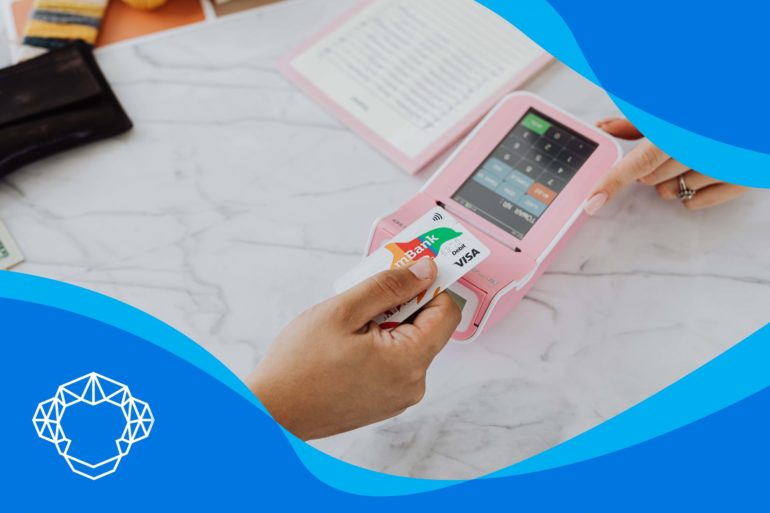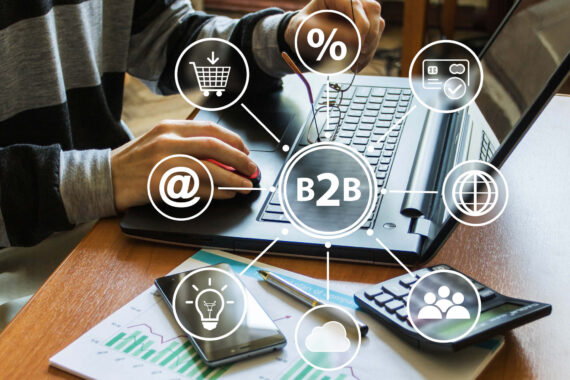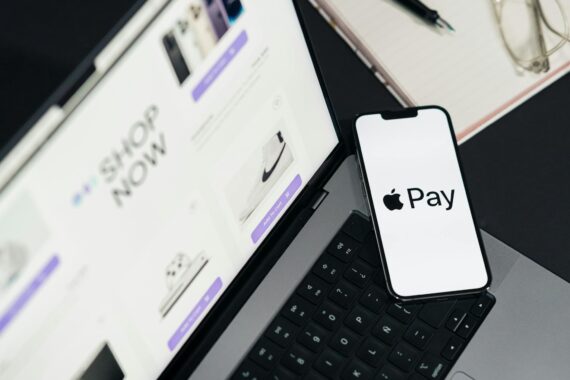For 67% of Americans, plastic is the most preferred payment method. On a daily basis, there are more than 108.6 million cashless transactions only in the US. Swiping and tapping to pay are so easy to perform. But how do credit card machines work exactly, and what happens when the merchant presses that green button on the POS terminal? To see what happens behind the scenes, stay tuned!
How Credit Card Machines Work
CC machines, better known as POS terminals, are devices that allow businesses to accept both present and card-not-present transactions. More precisely, this device is the link between the customer and card processing, which brings money to your account.
The moment when the vendor types in the amount for the customer to pay, and inserts, swipes, or taps the plastic, the transaction starts. However, this is only a small visible part of the whole procedure that seems rather invisible. The real question is what happens behind the curtains and how does credit card processing actually work?
A POS Terminal Is a Hardware System for Payment Processing
Inside the device, there is a hardware component, paired with software, to read magnetic scripts. Those two enable the processing companies to initiate and finish the transaction.
So when the customer uses plastic to pay for a product or service, the POS terminal reads the magnetic strip first to check if there are enough funds to transfer to the vendor. After the authorization is done – which is a procedure for itself, the receipt is printed out, and the purchase is officially finished. This is how credit card scanners work in short.
What Types of POS Terminals Can You Install in Your Store?
Depending on the business you’re in, the machine you’ll choose may differ. For example, if you run a successful small business, maybe installing a reader and PIN pad will be enough. However, if you run a biz based on diverse products, and you’re capable of making more than 30 sales a day, then having a whole system is the best option for you. The POS system usually implies these devices:
- CC device (with a PIN pad),
- A monitor or a tablet,
- Cash register,
- Printer,
- Additional software for inventory management, sales, and discounts.
Aside from these functionalities, there is another choice to make – the type of terminal. Here are options you can choose from:
- Countertop terminals are the most common choice of brick-and-mortar stores that want to have centralized paying places. Here, merchants can process both credit and debit cards, contactless transactions, PIN entries, or swiping. The only thing to take care of is to connect them to a phone line or internet network, and they’ll work seamlessly.
- Portable terminals, on the other hand, require a wireless internet connection to process cashless payments. So if you were wondering how does a portable card machine work, or do credit card machines need internet, the answer is clear. A connection to the WI-Fi is necessary. The best thing when it comes to these types of terminals is they allow integration with mobile POS systems, which is a key to accepting transactions done through Apple Pay, Google, or SamsungPay.
- Virtual terminals are the most suitable solution for all those who are about to transform their brick-and-mortar store into an online shop. Those terminals enable card-not-present transactions, meaning the customer will type in all the data and proceed with paying. Another benefit of eCommerce payment options is that they can be easily integrated into software that regulates your inventory, which will provide you with additional ways to track sales.
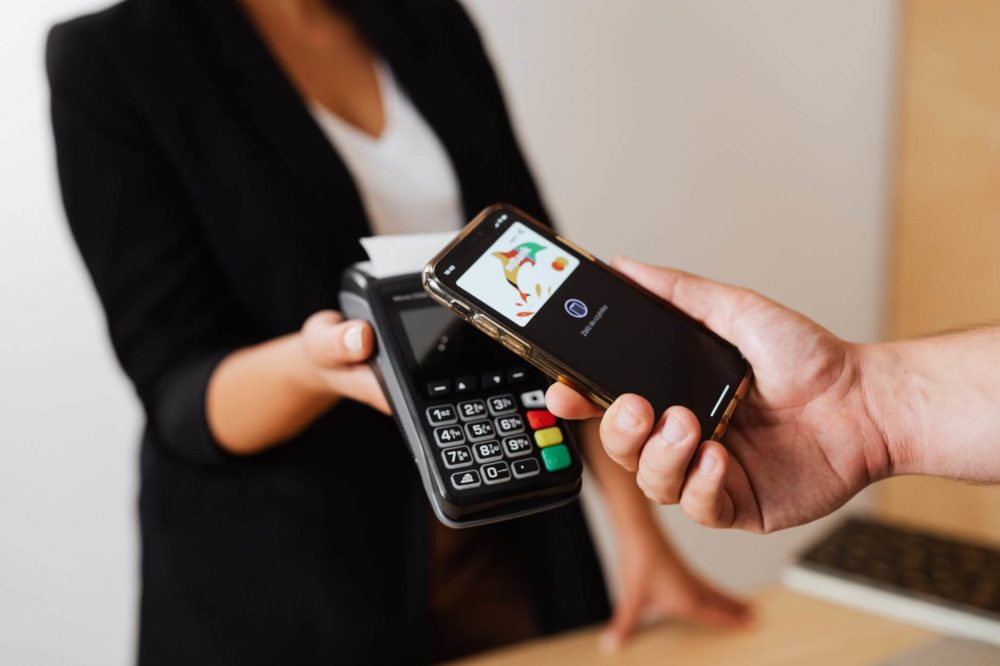
Behind the Hardware Stands a Processing and Authorization System for Cards
Now that you know the answer to the question how does a card machine work, it’s the right time for the next lesson – the processing and authorization system. From the moment plastic is used to the moment the receipt is printed, which usually takes no more than ten seconds, there are seven different steps.
The whole transaction goes through a complex check that includes communication between the cardholder’s issuing bank and the merchant’s bank, where it is determined if there are enough funds to authorize and complete the transaction. All this happens in a couple of seconds, with the help of encrypted codes exchanged between all parties that keep the customer’s data safe. Here is how the whole process works.
#1: The Cardholder Presents Their Plastic and Gives All the Data
Once the cardholder is ready to finish shopping, be it in a brick-and-mortar store or through an online shop, the transaction begins. In person, the merchant will take care of everything – except the PIN. When it comes to card-not-present transactions, cardholders will provide the getaway system with all the necessary information. This is how it all starts.
#2: Once the Payment is Requested, It Must Be Authenticated
In the next step, the device sends data to the merchant’s bank. This data is authenticated and forwarded further in the form of a request to the customer’s financial institution.
#3: The Transaction Is Submitted to the Debit or Credit Card Provider
The moment the request has been received, the merchant’s bank will submit the request for authorization further to the card association, like Visa, American Express, or MasterCard. This is necessary because the provider has to confirm that all the data is valid.
#4: The Association Requests Authorization from the Customer’s Issuing Bank
After the provider verifies that all the details are valid, they pass the authorization request to the customer’s issuing bank. Once it is confirmed that there are enough funds to support the purchase, the next step begins.
#5: The Issuing Bank Gives an Authorization Response
The moment the issuing banking system receives the authorization request, it will check the details and the customer’s funds and confirm or deny the request. To get a positive answer, it is necessary to have enough funds.
#6: The Merchant Gets the Payment
Once the transaction has been verified, the signal is sent back to the device, and the receipt is printed out. This is a confirmation the purchase has been made and is safe for all parties. Although this process may seem long, it actually happens in a few seconds. However, the money is deposited to the vendor’s acquiring bank account within two or three days.
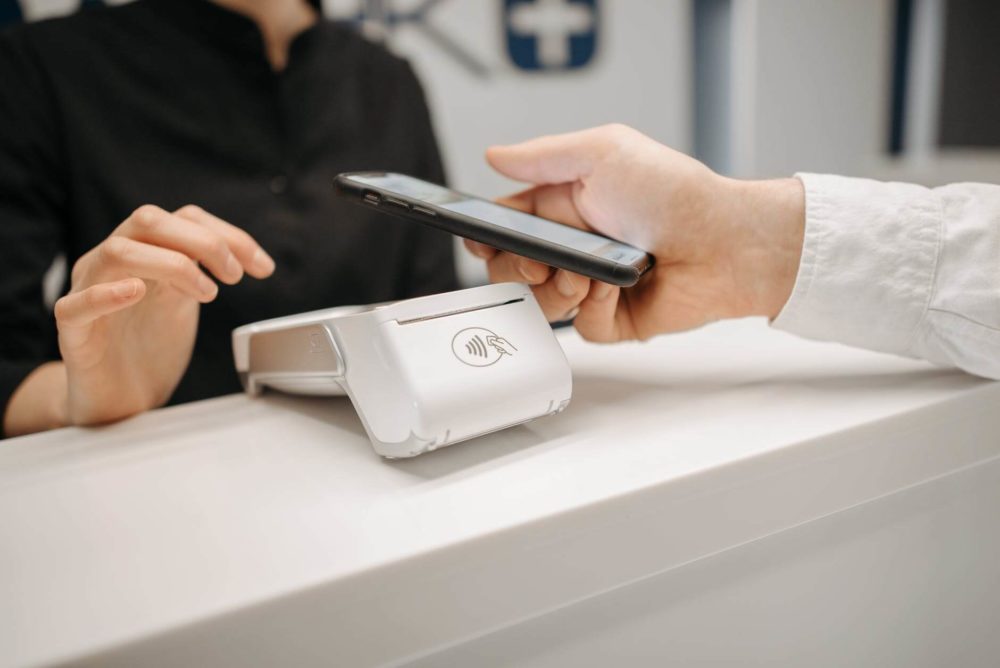
What Are the Benefits of POS Systems?
POS systems and cashless payments have changed the way sales are made in many ways. Not only do customers have the option to postpone their expenses, but they also have a greater choice of preferred payment methods. Here are the top four benefits of implementing POS systems into your business.
Greater Chances of Closing the Sale
As we have already mentioned, the preferred paying method becomes a super-important factor that influences the client to finish the purchase, especially in eCommerce-based businesses.
Just for the record, the average cart abandonment rate is 44% – which is huge. And for 7% of customers who decided to leave the web shop in the middle of the purchase, a lack of preferred paying methods was the main reason for this decision. Even in a brick-and-mortar store, if the customer is left without the option to use plastic and pay for the product or services in installments, it’s most likely you’ll lose them. To be more specific – you’ll direct them to a competitor who offers this option.
Introducing different paying options, including mobile, contactless, or online payments, is the best way to expand your business and boost sales. The principle is actually pretty simple – give the customers what they need, and your biz will grow!
Advanced POS Software Features Let You Automate and Track Sales
Depending on the software you choose to integrate to POS, there are multiple functionalities that can help you track sales and inventory and monitor the financial results more easily. Inventory management integration is definitely the most important feature since it can help you avoid any out-of-stock situations and indicate how well a specific product is being sold.
Integration to an Online Store and Accepting Card-Not-Present Payments
If you’ve decided to take your biz to the next level, then going for an eCommerce store is the path to follow. The advanced software will provide you with the possibility to integrate the online store into the POS system and start to accept online transactions seamlessly.
Also, this is the best way to unify all sales channels and track the inventory. However, when introducing this option, don’t forget to apply for the merchant account (if you don’t already have one), since it is a necessary step to be able to handle those transactions.
POS Systems Are Also a Great Solution to Manage Membership Programs
Although this feature is usually not considered integral, if your aim is to nurture the relationship with loyal customers, then going for this solution is a must. POS systems will help you manage membership programs more easily, no matter which reward system you want to implement. Award points to frequent buyers, which they can exchange for a discount, free products, or special prices – all this is possible with POS systems.
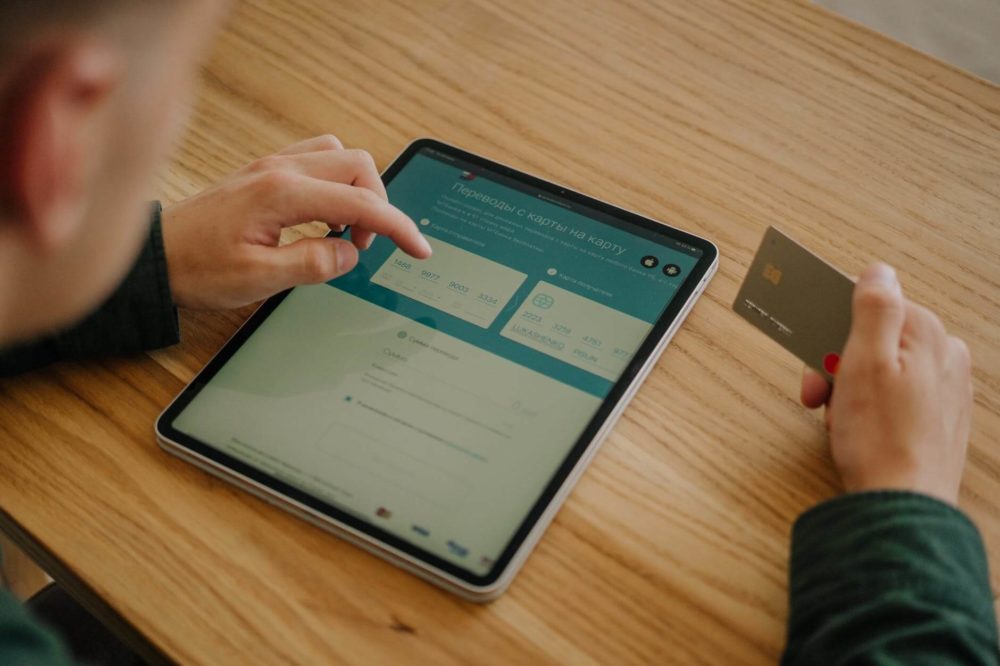
A Processing Company Can Provide You With a Credit Card Machine
So, if you’ve ever wondered how does the credit card swipe machine work, you’ve just got your answer! However, if you’re still not sure how to get a machine and implement the POS system in your company, make sure to contact us since we provide all types of devices to support you in boosting your sales.
Our merchant services cover all larger industries, from hospitality, automotive, and moving services, to eCommerce and grocery stores. So, whether you need a portable, mobile, or another type of station, we’ll provide the best solution for your business. The best thing of all? Our credit card processing services are affordable for any type and size of the company, and the costs are always transparent. This way, you’ll be in total control of your revenue and able to dedicate yourself to the most crucial parts of your biz.

